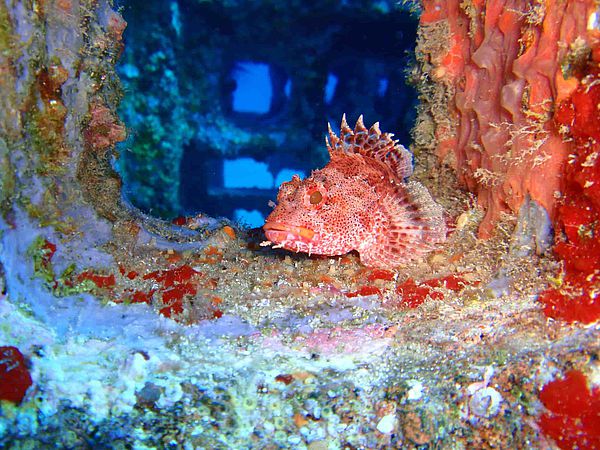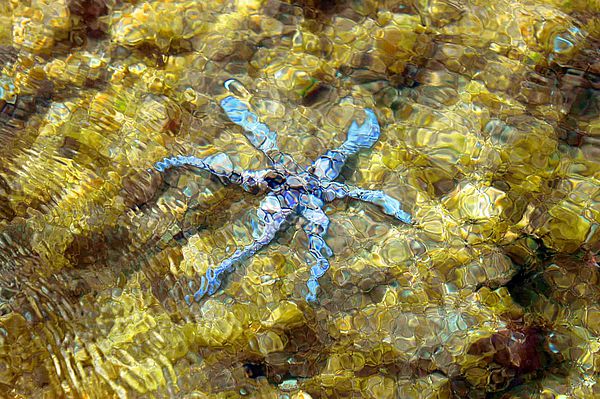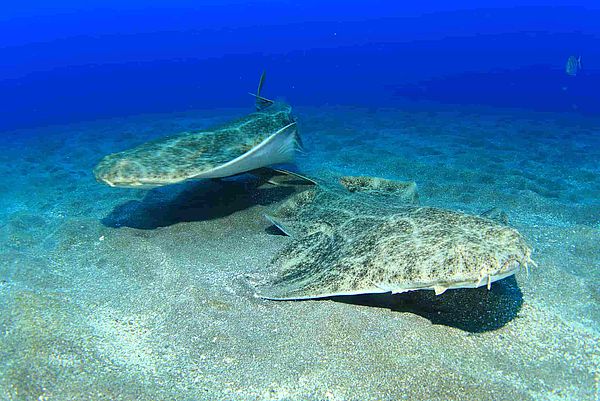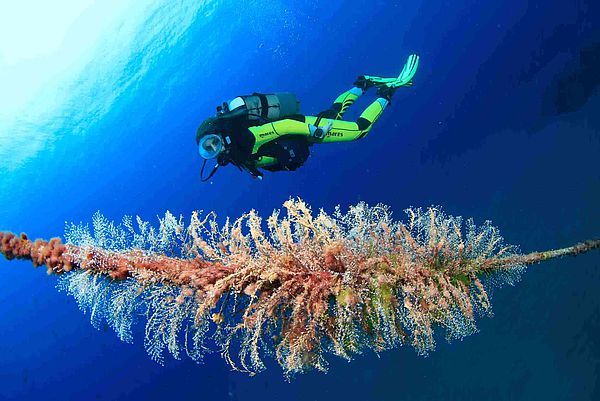Gran Canaria doesn’t just start at the edge of the beach. Not at all. It appears long before that, although submerged under the sea. The powerful orography is reproduced on the seabed running all the way round the island earning it the nickname of Miniature Continent.

In many ways, the sea around the island represents all seven seas on the planet. Somebody should make the effort to collect a full set of specimens from around the same island because scuba divers can find tremendous walls in Gran Canaria ending in abysmal floors, monumental drops which cause an explosion of marine life, volcanic caves and dune “deserts” with a thousand fish… basically a captivating sequence of the best of each ocean. But something makes this island completely exceptional for scuba diving: the temperature, which is a big deal in Gran Canaria.

The Atlantic surrounding Gran Canaria fits scuba divers’ needs like a glove, in an extraordinary way for this latitude. In winter, it swaddles it in a higher temperature than in the months of March and April which is the lowest period. The warm flow which reaches the Gulf Stream sets the thermometer around 20 degrees, 25 - 30 metres down and in the middle of winter. Later it ‘drops’ to 18 degrees in the spring, and rises back up to 26 degrees in the summer.

Not even a gigantic heater could be so efficient. All this causes the amazing situation experienced by everyone lucky enough to dive here, finding that just a light wetsuit provides sufficient protection for many hours of diving.
Obviously this ‘underwater climate’ is not just a treat for visitors, but amazing for fauna, providing a home for an astonishing representation of species. Endless numbers of moray, amberjacks, barracudas, turtles, alfonsinos, bream, spiny angler fish or gulls weighing up to 30kg are some of the living treasures hidden by the sea around the island.

This festival for the senses is completed by a large number of artificial reefs, placed in strategically by institutions such as the University of Las Palmas de Gran Canaria detonating an even greater explosion of life.
Combining its large amount of flotsam, almost all with accessible depths which do not require decompression, with sea beds offering boulders which shelter millions of young, creates a highly desirable landscape under the island for a whole host of European divers, who grab the chance to fill their oxygen bottles in the middle of winter.
If we add to this the diving and underwater photography competitions; the far reaching network of clubs which provide all types of equipment; the different schools spread all over the island; the detailed maps with the most suitable places to dive provided by the Gran Canaria Government; and the fact that this sport is perfectly compatible with other maritime uses, the result is that divers have Gran Canaria only two flips of their fins away from Europe, providing one of the best sea beds in the world.